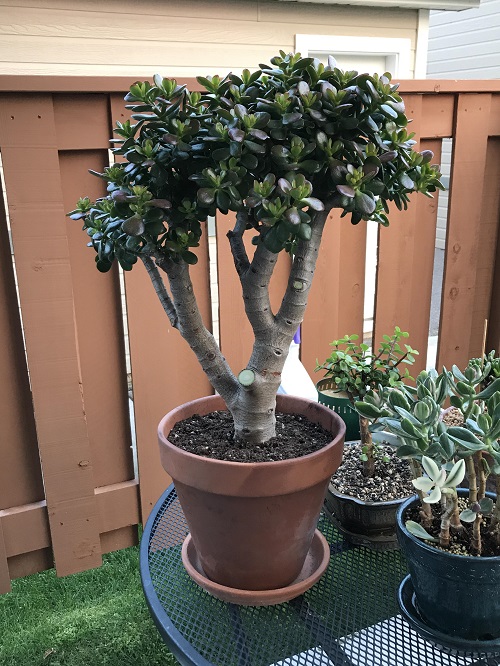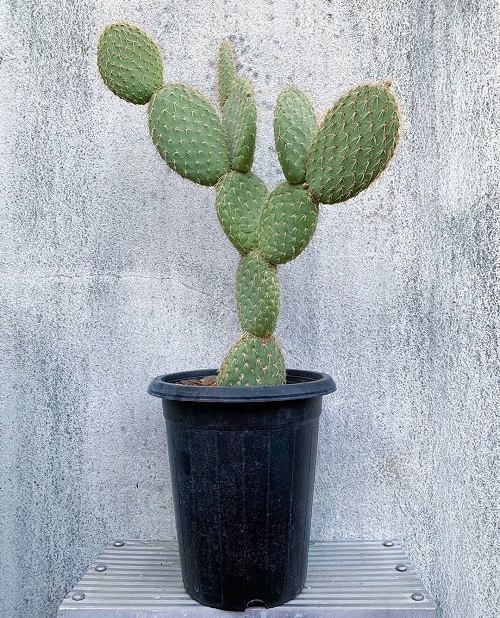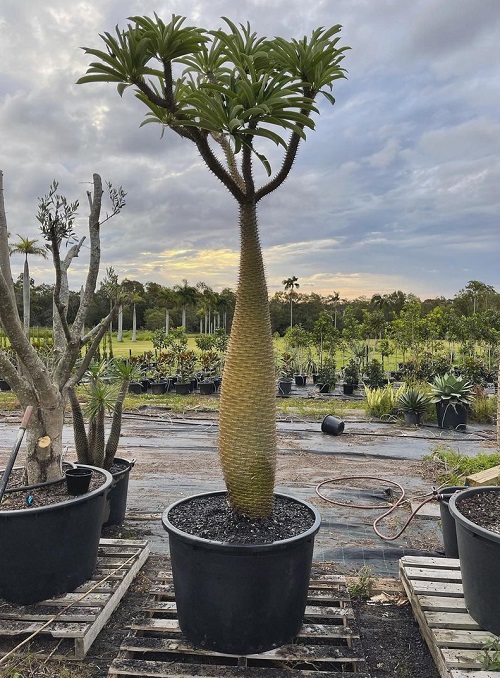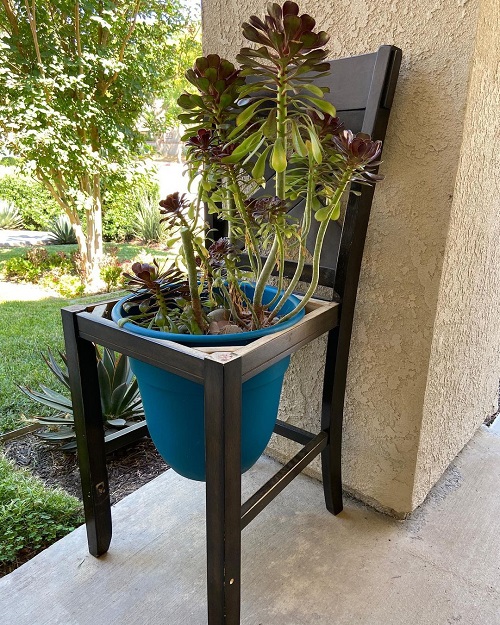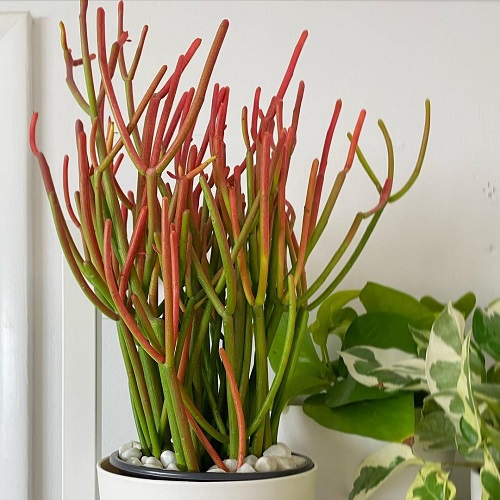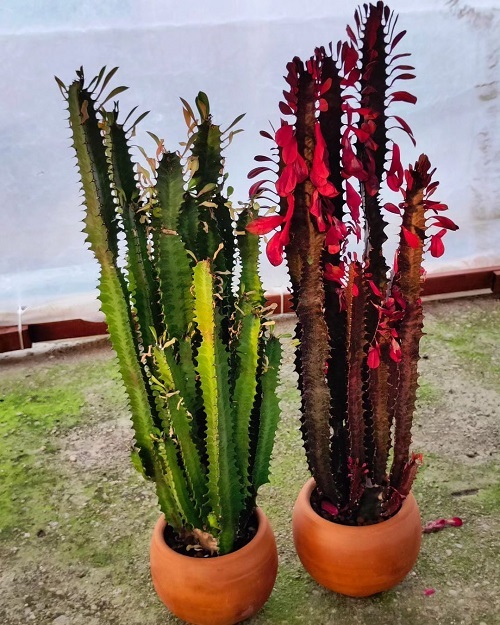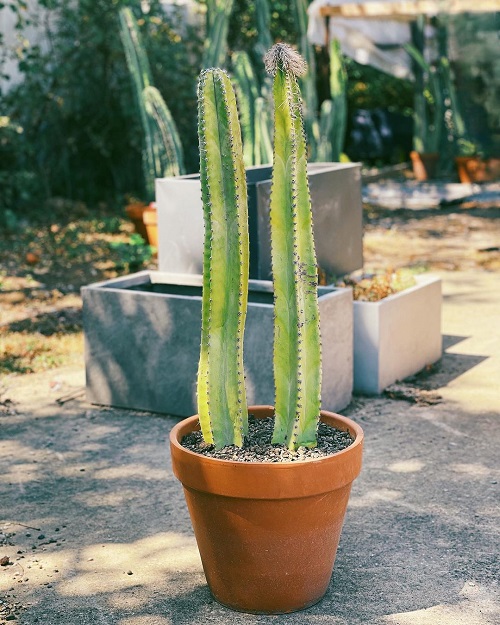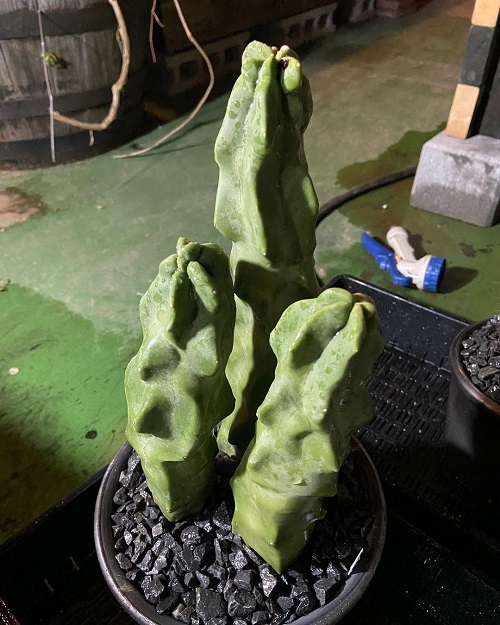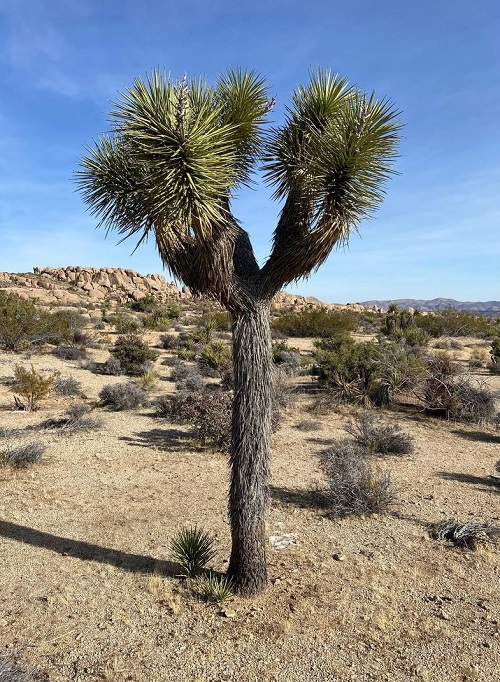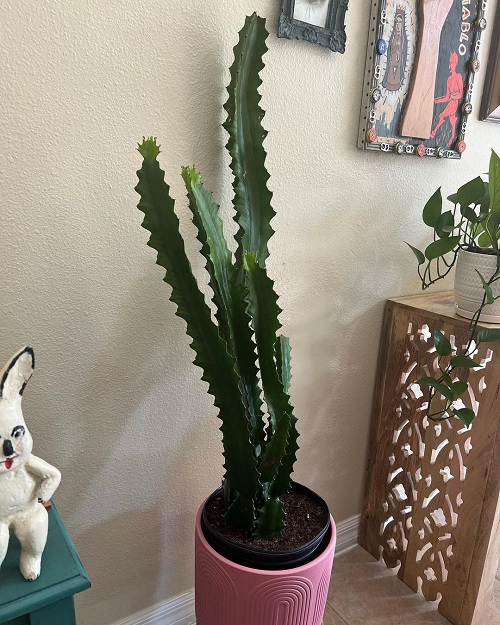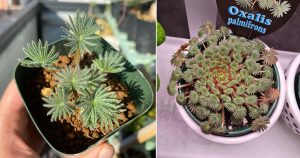If you want to play with heights in your garden, plant succulents that grow straight up which are easy to handle, too!
Here, you will find succulents that grow straight up and make your space look more beautiful. We have covered everything from sleek succulents to bright flowers in the exclusive list. Plus, they are low-maintenance plants that will thrive even under minimal care!
Succulents That Grow Straight Up
1. Jade Plant
Botanical Name: Crassula ovata
The Jade Plant is a resilient succulent widely favored as an indoor ornamental worldwide. Forms a small, rounder, evergreen shrub-like structure approximately 6 feet in height. It grows upright, with thick branches produced by its gnarled trunk with fleshy leaves and thick stems that store water.
Propagation is straightforward, either by stems or leaf cuttings. In the wild or outdoor planting, the detached leaves develop roots quickly within a few weeks and expand their colony!
Pro Tip: Pruning it from time to time will help it develop trunk strength and handle heavy leaves and stems. It also makes an excellent miniature tree collection!
2. Prickly Pear
Botanical Name: Opuntia ficus-indica
Prickly Pear is also popular as the Nopal Cactus and for its survival in different climatic conditions, from arid to semi-arid regions. Grows up to 5 feet in height, boasting thick, oblong stems that contain water-repellent and sun-reflecting waxy epidermis.
This plant has many nutritional and medicinal benefits. It is used in herbal remedies to cure health problems across many countries, in the form of tea or juice, and even its flowers act as anti-ulcerogenic or antidiarrheal agents.
3. Madagascar Palm
This impressive deciduous tree is often mistaken for a palm due to its name! It has a thick, cigar-shaped swollen base adorned with clusters of leaves. The plant’s mature height is approximately 10-20 feet.
You can plant it outdoors during mild winters and raise it in containers as a houseplant. It needs full sun, well-drained soil, and moderate watering to flourish! After 10 years of planting, you will see the plant producing beautiful, fragrant white flowers!
4. Tree Aeonium
Botanical Name: Aeonium arboreum
This plant belongs to the species found in the Canary Islands and other parts of northern Africa, meaning it is only adapted to mild and dry climates.
Tree Aeonium is a tall growing plant with fewer branches and straight stems. Its leaves are spoon-shaped, green or purplish in color, and form rosettes that are 10 inches in diameter. Plus, when the plant is in its dormancy, the rosettes are small and achieve their mature size during the growing season,
5. Pencil Cactus
Botanical Name: Euphorbia tirucalli
Pencil Cactus is a spineless tree with a heavy trunk and pencil-like branches that are initially green, then become red in winters. Leaves appear at the end of the branches in groups with showy bracts. It needs bright sunlight to grow!
But it should be handled cautiously, as its milky-white sap is toxic to humans. Strangely, the level of effects is still unknown. However, its poisonous reactions are noticed in pH-mediated necrosis and pro-inflammatory, immune-mediated mechanisms.
6. African Milk Tree
Botanical Name: Euphorbia trigona
Don’t go by its name—look at its cactus-like appearance, with triangular stems with ridges and thorns, which are toxic to humans.
The plant stays green in its growing season, grows 1-2 feet yearly, and reaches 9 feet tall—this is the size when planted outdoors, while indoors, it remains comparatively small, or about half of its total height! It thrives in bright sunlight and partial shade.
7. Ocotillo
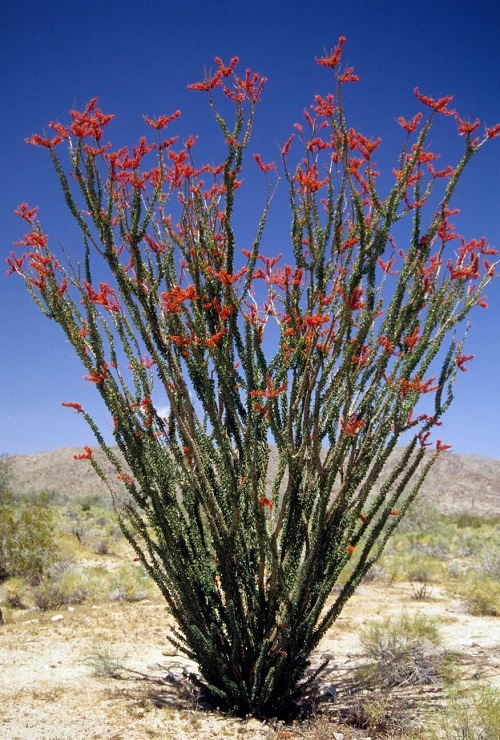
Botanical Name: Fouquieria splendens
This specimen is native to the southwestern United States and is prized for its otherworldly appearance—long stems emerging from a central base and reaching 8-20 feet. Adorned with small red or orange flowers and tiny flowers give the entire plant a fiery look, particularly after rainfall.
Also, it features small, green leaves around the stems, which usually begin after rainfall and fall in drought. Its lifespan can last up to 100 years, representing resilience and longevity in harsh desert landscapes.
8. Senita Cactus
Botanical Name: Lophocereus schottii
The Senita Cactus is a moderately growing, trunkless cactus that forms a shrub-like appearance. Its yellow-green upright, columnar green stems can reach 13-14 feet tall and 6-7 inches wide. When matured, they are covered with hair-like, intricately twisted bristles that can grow up to 4 inches long.
In summer, this plant graces its habitat with nocturnal, funnel-shaped blooms, which typically open at night and come in shades of white to deep pink. Also, it produces edible fruits, but their use as food is infrequent!
9. Totem Pole Cactus
Botanical Name: Pachycereus schottii f. monstrosus
The totem pole cactus is often noted for its unique shape, form, or structure, e.g., columnar-shaped large branches, making it tolerate of severe drought conditions. They look like a candelabra arrangement. It is a slow-growing cactus that can reach up to 10-12 feet tall in its native regions with porous, sandy soil in full sun.
In spring, mainly during evenings, you can observe its pale-pink, odorless flowers opening until the next day mid-morning. This plant also produces egg-shaped edible strawberry fruits. It is an ideal addition to rock gardens, succulent gardens, or Mediterranean gardens,
10. Joshua Tree
Botanical Name: Yucca brevifolia
This tree-like succulent is mainly found in southwestern North America’s Mojave desert. It holds cultural value for American Southwestern people due to its sturdy nature and distinctive looks!
Joshua Tree is an upright, slow-growing succulent with evergreen foliage. Features bulky trunk, twisted branches, gray-green leaves and grows about 15-30 feet tall, while its spreading can vary according to age. Also, it produces 20 inches of panicles of large bell-shaped blooms. Because of these, it is considered a valuable ornamental plant as well!
11. Boojum Tree
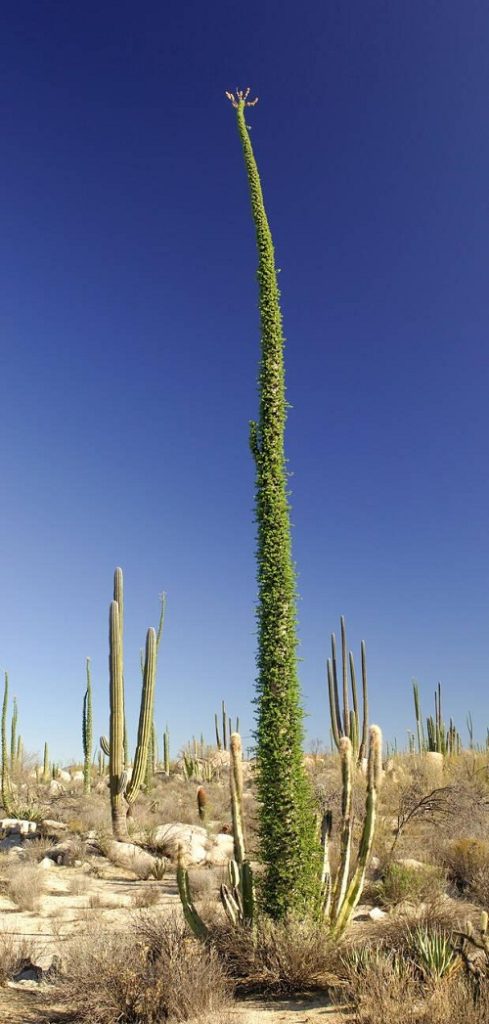
Botanical Name: Fouquieria columnaris
This tree is known as the strangest specimen because of its changing appearance during its growth stages. In its young phase, it has a bushy appearance with lots of thorny branches. On maturity, its trunk becomes columnar-shaped and bends downwards like an upside-down carrot.
Its leaves are deciduous and yellow-green to bluish-green. It attains a height of 40-70 feet and thrives in well-drained, sandy soil. It needs full sun and very minimal water. The best part is that it is disease or pest-free. And best suited for desert and Mediterranean landscapes.
12. Queen of the Night
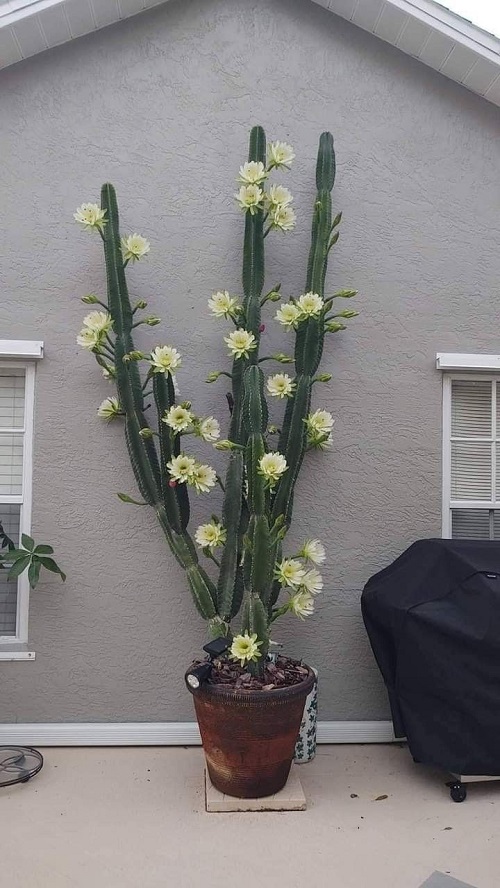
Botanical Name: Cereus hexagonus
It is a shrubby plant that grows close to the ground and expands like a candelabrum. Interestingly, its scientific name, hexagonus, refers to stems with six angles.
Reaching up to 50 feet in height with grayish-green to bluish-green branches. It bears funnel-shaped flowers in summer that open up during the nights and produces pale red about 5 inches of delicious fruits. You can safely add this to your home by placing it on a southeast or western sunny window.
13. Blue Flame
Botanical Name: Euphorbia antiquorum
The Blue Flame is an herbaceous plant with irregularly shaped, evergreen foliage that can be 5-7 meters tall as a houseplant and, in the wild, can reach up to 20 meters. Features cactus-like growth, fleshy stems, and tiny prickly stipules.
You can propagate it easily by seeds or cuttings. The plant needs full sun and little water, grows quickly, and boasts pink flowers. Some sources suggest that the plant also has some sort of medicinal properties, but their reliability is not accurate.
14. Saguaro
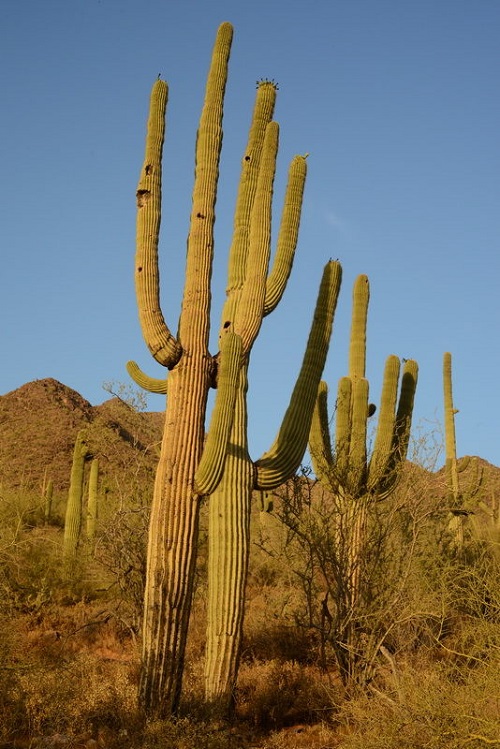
Botanical Name: Carnegiea gigantea (Engelm.)
This plant is endemic to the Sonoran Desert region. It is the largest columnar cactus in the U.S., standing 10-14 meters tall. It has a distinctive growth style: young plants grow slowly, take 20-50 years to reach maturity, and can live up to 200 years.
Interestingly, the mature plant can produce 300 blooms annually and 150-200 very nutritious fruits, each containing approximately 2,500 seeds. Animals play a crucial role in spreading saguaro seeds.
15. Organ Pipe Cactus
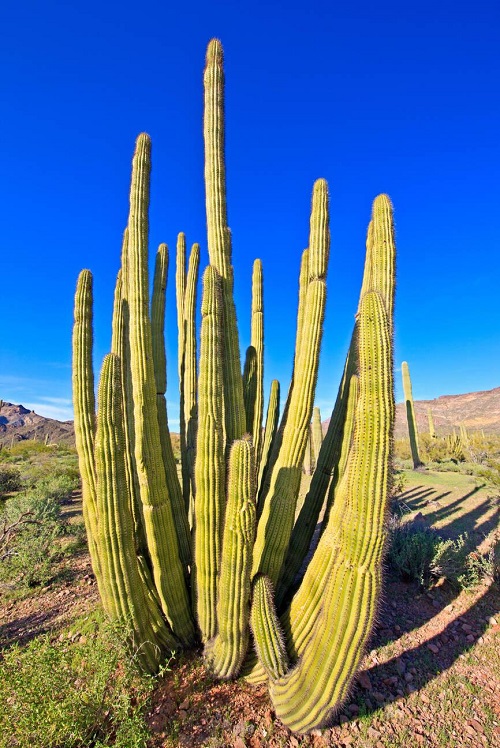
Botanical Name: Stenocereus thurberi
Native to the United States and found particularly in warm, rocky, deserted areas. It is a tree-like cactus whose stems give it an organ pipe look.
Stenocereus thurberi has upward, many, columnar stems that can grow 12-16 feet tall and feature 12-19 ribs. Features 30 or more branches with brownish-gray spines on its short trunk. The plant blooms in spring, and the large funnel-shaped flowers, about 3-4 inches in diameter, are creamy-white and tinged with deep pink, opening only at night!
So, now you have the list of best Succulents That Grow Straight Up! Do you have any tips or questions? Please share it in the comments below!

